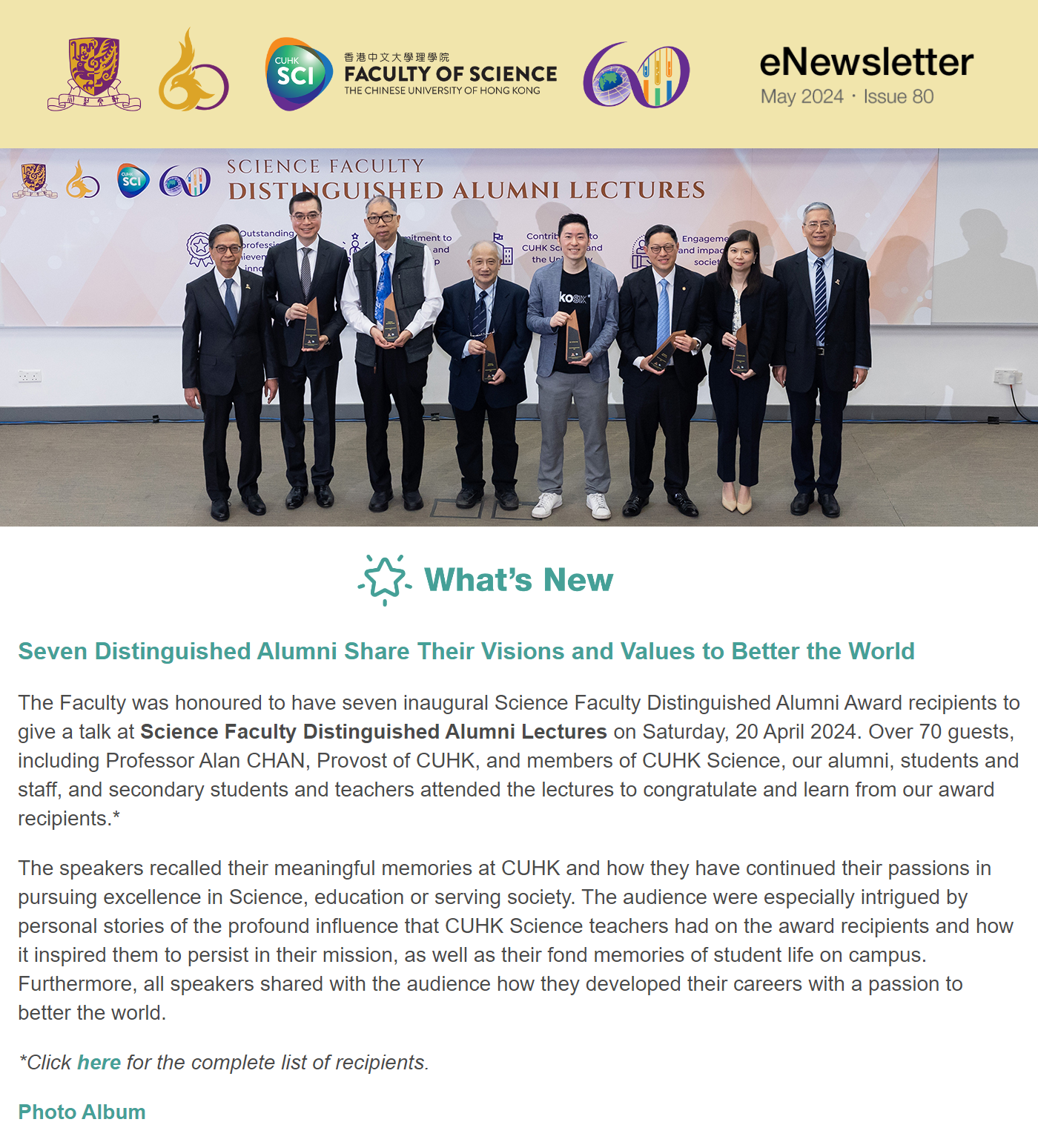Understanding the Complexity of Diabetes – A New Way of Looking at Old Data
Date: 27 May 2009 (Wednesday)
Time: 12:30pm - 2:00pm
Venue: 126, C N Yang Reading Room, Science Centre North Block
Speaker: Prof. CHAN Chung Ngor Juliana,Professor, Department of Medicine & Therapeutics, Director, Hong Kong Institute of Diabetes & Obesity, Prince of Wales Hospital, The Chinese University of Hong Kong
Abstract: According to the World Health Organization, 60% of all deaths are due to chronic diseases notably diabetes, heart disease, cancer, mental illnesses and respiratory diseases. A wide range of predisposing, precipitating and perpetuating factors, which can be genetic, environmental and lifestyle-related, interact in ways yet to be understood, to give rise to the multifaceted nature of these common and complex diseases. Using diabetes as an example, there are frequent but not invariable clustering of multiple risk factors including high blood pressure, obesity, abnormal lipids, inflammation, albuminuria (protein in urine) which interact in a multiplicative manner to give rise to heart disease, stroke, cancers and kidney failure. Since 1995, we have established a comprehensive diabetes registry as a quality improvement program to document all relevant clinical data including risk factors and complications in 8000 type 2 diabetic patients. In 2005, we censored their clinical outcomes including death and hospitalizations due to cancer, heart disease, kidney failure and stroke. Using various statistical techniques, we have developed a series of risk equations to predict the 5-year probability of these events with 70-90% sensitivity and specificity. In a subset of 1200 patients, we have genotyped over 100 SNPs of 60 proteins implicated in cardiovascular disease. We used conventional and novel analysis including structural equation modeling and decision trees to discover novel gene-gene interactions in diabetic cardio-renal complications. With advancing technology including high throughput genotyping and sequencing, unraveling the molecular architecture and its regulation and maintenance to predict biological behaviors and consequences in human is a distinct reality. However, to accomplish this challenging task, a cohesive strategy which cuts across all disciplines with inputs from clinicians, biologists, biochemists, bioinformatists, computational scientists, mathematicians, engineers and statisticians is needed. Given the large number of biobanks accompanied by comprehensive databases available in Hong Kong, the discovery of knowledge from these resources promises to provide new insights and solutions to benefit the growing number of people with chronic diseases, estimated to affect more than 1 billion of people in China.














